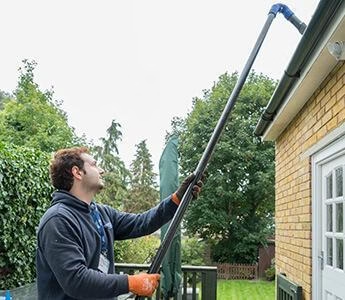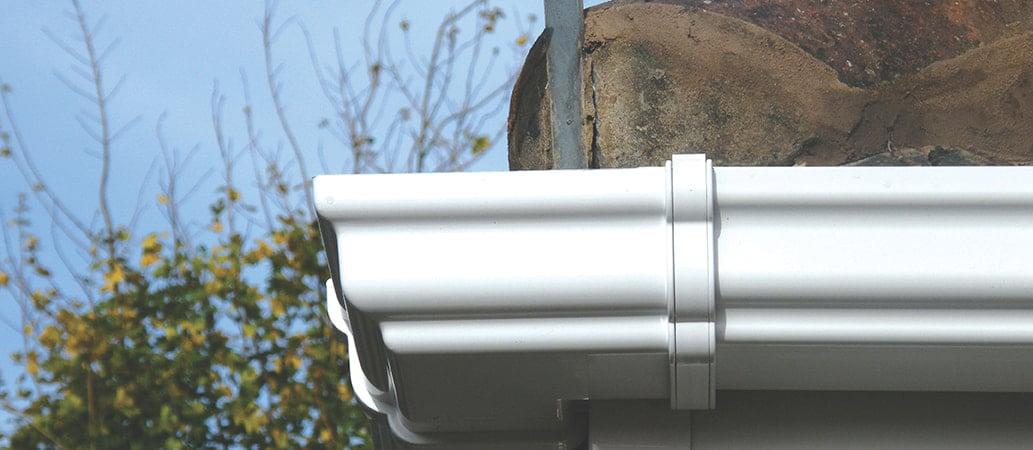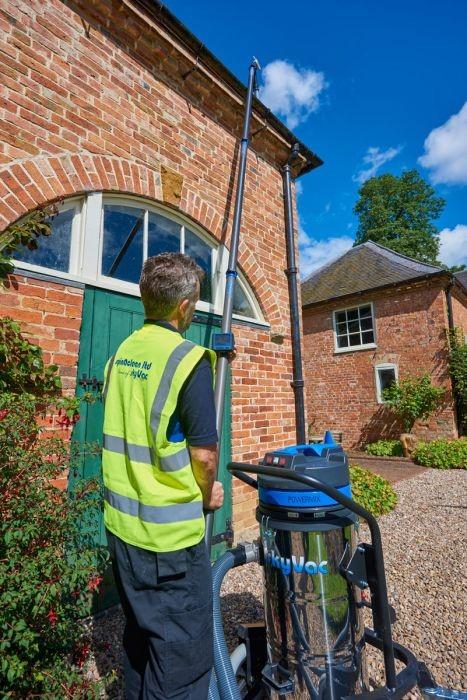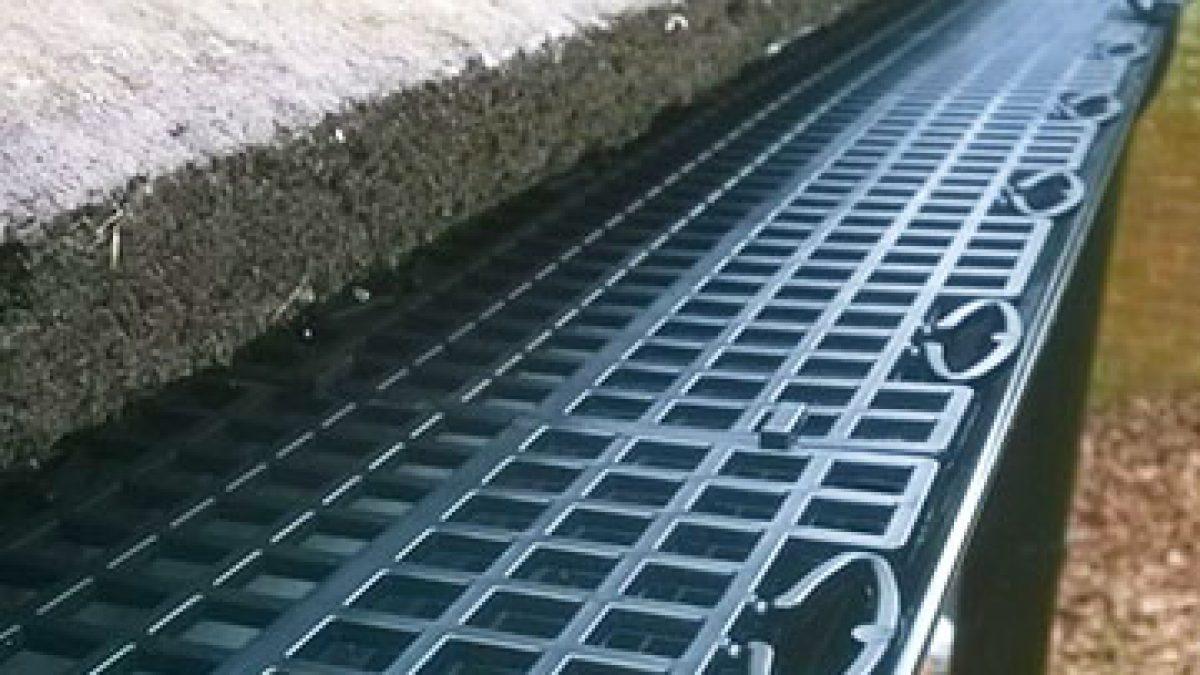
Britain’s weather keeps the conversation lively and the gutters busy. From autumn leaf-fall to sudden summer downpours, the humble gutter is a small channel with an outsize job: moving water away from roofs, walls, and foundations before it can do quiet, costly damage. Yet for many homes and commercial buildings across the UK, gutters tend to be noticed only when they overflow, stain masonry, or invite moss and mildew to take hold.
Gutter cleaning services exist to prevent that tipping point. In a landscape of slate roofs, Victorian terraces, UPVC fittings, and coastal salt air, the work ranges from routine debris removal to safe access on tall properties, inspection of joints and downpipes, and the use of vacuum systems that minimise ladder time. It is as much about risk management as it is about tidiness: blocked drainage can lead to damp, rot, and insurance headaches that far outweigh the price of maintenance.
This article explores the essentials of gutter cleaning services in the UK-how they work, when to book them, what they typically cost, and the standards and safety practices reputable providers follow. It also looks at regional quirks, seasonal timing, and simple checks you can do yourself, helping you decide when professional help is sensible and how to choose it with confidence.
Table of Contents
- What the UK climate means for your gutters and an optimal cleaning calendar
- Methods compared vacuum systems ladder work and camera inspections with when to use each
- Safety and compliance essentials insurance accreditation and Working at Height rules to check
- Cost expectations service scope and value add-ons from gutter guards to downpipe flushing
- In Retrospect
What the UK climate means for your gutters and an optimal cleaning calendar
The weather here swings from fine mist to sideways downpours, and your rainwater system feels every mood change. Constant moisture breeds moss and algae that shed into gutters; autumn leaf fall builds dense mats; gritty runoff from slate and tiles creates silt; and freeze-thaw cycles pry open joints and weaken seals. In coastal belts, salt-laden winds hasten corrosion on metalwork, while spring pollen and seed pods knit together into a felt that slows flow and invites overflow. Left to stew, this mix grows heavy, strains brackets, and pushes water behind fascias and into brickwork, turning a simple clean into costly repairs.
A weather-savvy routine keeps things simple: aim for a twice-yearly minimum clean (late spring and late autumn), add a quick visual check after severe storms, and include a mid-winter inspection where icing is common. Tailor by location: leafy suburbs often need an extra visit post-leaf-fall, rural plots under conifers benefit from quarterly checks, and coastal homes should include corrosion inspections and fresh protection. The simple rule is seasonal rhythm plus responsive checks-preventing blockages before clouds burst.
- High leaf load: Streets lined with plane, oak, or sycamore mean extra autumn attention.
- North-facing, shaded runs: Slower drying encourages moss and algae buildup.
- Older cast iron or aging uPVC: More prone to joint failure; inspect seals and paintwork.
- Coastal exposure: Look for rust bloom and pitting; rinse and protect metal components.
- Roof valleys and dormers: Debris funnels directly into outlets-check more often.
- After amber/red weather warnings: A fast post-storm check can prevent internal damp.
| Period | Best Window | Focus Tasks | Why It Matters |
|---|---|---|---|
| Late Spring | Mar-Apr | Post-winter clean, flush downpipes, check seals | Clears silt, fixes freeze-thaw damage |
| Early Summer | June | Quick check, remove seed pods, test fall | Prevents felted blockages in warm rain |
| Late Autumn | Oct-Nov | Major leaf clean, remove sludge, inspect brackets | Readies gutters for winter storms |
| Mid-Winter | Jan (mild day) | Spot ice damage, clear silt dams, check overflows | Stops freeze-related leaks |
| Reactive | After storms | Dislodge blockages, resecure joints, scan for cracks | Limits sudden damp ingress |
Methods compared vacuum systems ladder work and camera inspections with when to use each
Vacuum systems, hands-on ladder work, and camera inspections each play a distinct role in UK gutter care. Ground-based suction rigs with carbon-fibre poles clear long runs fast, keeping feet on the ground and gardens undisturbed-ideal for routine maintenance up to three or four storeys. Traditional ladder work excels at tactile tasks: prying out compacted moss, checking unions, reseating clips, and scooping stubborn silt by hand. High-definition camera surveys add clarity and accountability-showing where the fall is wrong, where joints leak, and providing before/after proof for quotes, insurance, and block management.
- Vacuum systems – use when access is tight (over conservatories/garages), heights are challenging, or you need fast, low-disruption maintenance.
- Ladder work – use when debris is heavy or compacted, minor fixes are needed on the day, or detailing at outlets, hoppers, and corners is required (subject to safe access).
- Camera inspections – use when diagnosing overflow causes, confirming fall and joint integrity, documenting warranties, or scoping complex roofs before a quote.
Selection hinges on height, access, debris type, weather, and risk. Terraced streets and narrow ginnels favour vacuum poles; slate roofs shedding thick moss often benefit from a combined approach-manual scraping at outlets followed by suction. Camera checks locate downpipe blockages, bird nesting, and misaligned brackets before you commit to a method. In colder, wetter months, reducing time at height is prudent; conversely, short bungalow runs or one-off repair visits often justify a safe ladder setup. For heritage facades, low-impact methods and thorough visual documentation help protect fabric and satisfy stakeholders.
| Method | Best use | Limitations |
|---|---|---|
| Vacuum | Long runs, 2-4 storeys, over extensions | Compacted moss and cement may resist suction |
| Ladder | Stubborn debris, minor fixes, short spans | Weather/height constraints; requires safe footing |
| Camera | Diagnostics, quotes, before/after proof | Inspection only; doesn’t remove debris |
Safety and compliance essentials insurance accreditation and Working at Height rules to check
Due diligence for UK gutter work starts with paperwork. Ask contractors to evidence Public Liability (ideally £5m) and Employers’ Liability (£10m) with policy wording that explicitly covers roofline access, ladder use, MEWPs and the maximum working height they’ll reach on your property. Verify current RAMS (risk assessment and method statement) tailored to your site, plus proof of competence through SSIP accreditations and relevant training cards. If debris is removed, request a Waste Carrier Licence and transfer note trail. For commercial sites, look for management systems such as ISO 45001 (safety), ISO 14001 (environment), and ISO 9001 (quality) to indicate disciplined compliance.
| Accreditation | Covers | Quick check |
|---|---|---|
| CHAS / SafeContractor (SSIP) | Health & safety prequalification | Active certificate, expiry date |
| Constructionline | Supply-chain validation | Verified status level |
| IPAF | MEWP operator competence | Card + machine category |
| PASMA | Mobile access towers | Card in date |
| ISO 45001 | Safety management system | UKAS-accredited certificate |
- Insurance scope: Includes guttering/roofline works, tools and hired-in plant, with an occurrence-based policy preferred.
- RAMS: Site-specific hazards (fragile roofs, overhead power), controls, and emergency contacts.
- Training matrix: Names, roles, and expiries for IPAF/PASMA, asbestos awareness, first aid.
- Evidence of inspections: Ladders to EN131, MEWP/tower inspection records (PUWER/LOLER where applicable).
Practical control of Working at Height under WAHR 2005 follows a clear hierarchy: avoid where possible (e.g., from-ground vacuum systems), prevent falls (stable platforms, guardrails), then mitigate (fall restraint before fall arrest). Ladders are for short, low-risk tasks; ensure a stable base, 3 points of contact, and tie-off or stabilisers. Use MEWPs for prolonged or complex access, with exclusion zones and a rescue plan. Weather matters-halt operations in high winds or electrical storms, and never step onto fragile roofing without specific controls. Supervisors should brief toolbox talks daily, record checks, and stop the job if conditions change.
- Planning: Access method justified; loadings and ground conditions confirmed.
- Controls: Edge protection, restraint lanyards, or certified anchor points-no improvised tie-offs.
- Environment: Set safe distances from live services; manage pedestrians and traffic routes.
- Weather thresholds: Follow manufacturer limits; typically pause ladder work above ~17-20 mph gusts.
- Documentation on site: RAMS, permits (if needed), equipment inspections, and emergency/rescue details.
Cost expectations service scope and value add-ons from gutter guards to downpipe flushing
Across the UK, fees usually scale with property height, linear metres of guttering, access complexity, and the volume of organic build‑up. A solid core service should include a full debris clear, a flow test, light joint checks, and tidy‑up of the work area, with optional photo evidence. Expect itemised quotes that separate the base clean from extras, clarity on VAT, and a brief note on access method (ladder, towers, or reach‑and‑vac). Homes with conservatories, dormers, or tight alleyways may sit higher in the band due to extra setup and safety time.
Value grows when the visit goes beyond the troughs. Downpipe flushing removes hidden plugs that re‑block gutters, while gutter guards (mesh or brush) can slow leaf return in tree‑heavy streets. Add‑ons like fascia/soffit wipes, minor seal/clip fixes, and annual plans keep runoff reliable through stormier months. If birds, moss, or overhanging pines are part of the picture, ask for tailored options and a light explanation of what’s best for your roofline and budget window.
- What the base job should cover: Debris removal, flow test, visual joints check, work area tidy, optional before/after photos.
- What moves the price: Storey height, access limits, roofline complexity, gutter length, debris load, regional labour rates.
- High‑value extras: Downpipe flush/jet, targeted repairs, gutter guard fit, fascia/soffit wipe‑down, maintenance plans.
- Quality signals: Public liability insurance, safe access method, itemised quote, clear warranty, punctual time slot.
| Option | What’s included | Guide price |
|---|---|---|
| Base clean – single storey | Full clear + flow test | £60-£90 |
| Base clean – two storey | Full clear + flow test | £90-£140 |
| Base clean – three storey/townhouse | Reach‑and‑vac or towers | £150-£250 |
| Value add‑ons | ||
| Downpipe flush/unblock | Water test or light jet | £20-£45 |
| Gutter guards (mesh/brush) | Supply + fit (per metre) | £7-£12/m |
| Fascia/soffit wipe | Front elevation quick clean | £25-£55 |
| Minor seal/clip fixes | Per joint/bracket | £5-£15 |
| Annual maintenance plan | 1-2 visits + priority callout | £80-£150/yr |
Prices are typical UK ranges and vary by region, access, and condition; confirm VAT status and exact scope in your quote.
In Retrospect
When the British weather does what it does best, your gutters are the quiet line of defence between a passing shower and a costly repair. Whether you live in a Victorian terrace, a new-build on an estate, or manage a row of commercial units, keeping those channels clear is less about vanity and more about prevention.
As you weigh up DIY ladders against a licensed service, look for providers with proper insurance, safe access methods, and transparent pricing. Ask for before-and-after photos, check reviews, and confirm how debris is disposed of. In most parts of the UK, a spring and autumn clean-or an extra visit after heavy storms or leaf fall-keeps water moving where it should.
Gutter care won’t win awards, but it does buy peace of mind. A few sensible choices today can spare you damp patches, sagging fascias, and restless nights when the rain sets in. Keep it simple, keep it safe, and let the water run its course.





